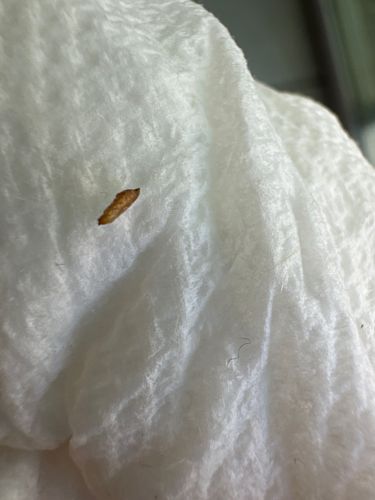Casemaking Clothes Moth Larva
Scientific Name: Tinea pellionella
Order & Family: Lepidoptera: Tineidae
Size: The silken case is typically 6 to 9 mm (about 1/4 to 3/8 inch) long.

Natural Habitat
Found indoors in dark, undisturbed areas such as closets, chests, and attics. They infest materials of animal origin.
Diet & Feeding
Larvae feed on keratin, a protein found in animal-based materials like wool, fur, silk, feathers, hair, and leather. They do not eat synthetic fibers unless blended with natural fibers or soiled.
Behavior Patterns
The larva lives inside a portable, flattened, silken case which it creates and carries with it. It camouflages the case with fibers from the material it is eating. The larva will poke its head out from either end of the case to feed and move. The adult moths are non-feeding and their primary purpose is reproduction.
Risks & Benefits
This insect is considered a household pest. The larvae cause damage by eating holes in clothing, carpets, upholstery, and other valuable items. They do not pose a direct health risk to humans. In natural environments, they function as decomposers of keratinous materials.
Identified on: 11/16/2025